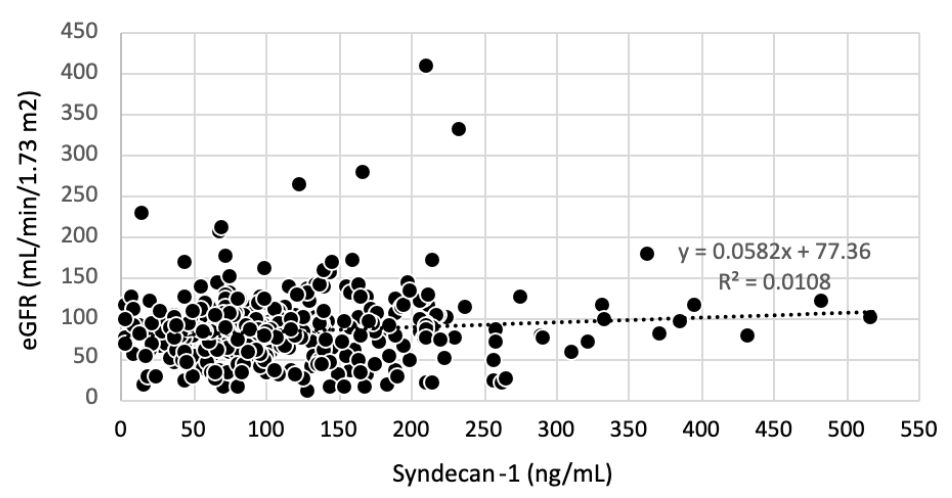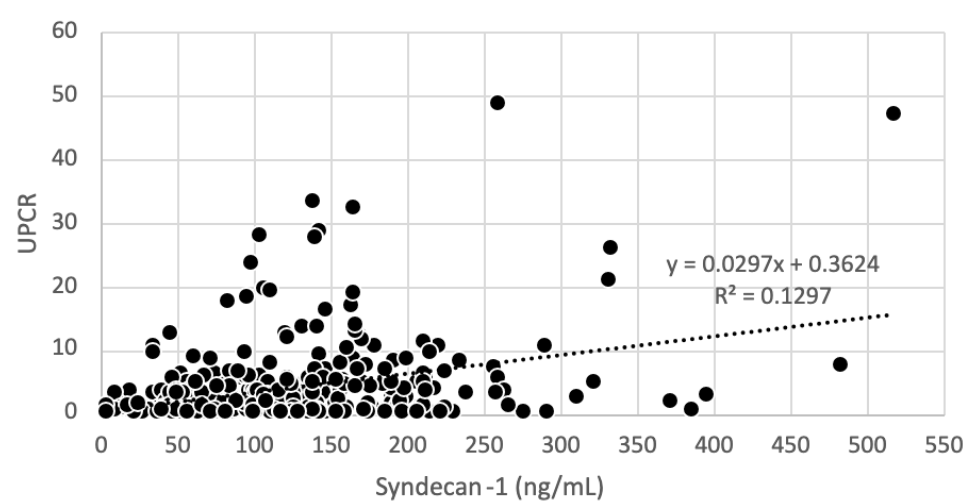Nephrology
Session: Nephrology 1
2 - Association of Syndecan-1 with Kidney Outcomes in Proteinuric Glomerulopathies
Saturday, May 4, 2024
3:30 PM - 6:00 PM ET
Poster Number: 2
Publication Number: 2.1129
Publication Number: 2.1129

Arshia Anand, Bachelor of Science in Biology (she/her/hers)
Clinical Research Assistant
Cohen Children's Medical Center
Melville, New York, United States
Presenting Author(s)
Background: Higher levels of Syndecan-1 (SDC-1) have been identified in children with idiopathic nephrotic syndrome. However, as a potential predictive biomarker of proteinuric glomerulopathies, the impact of SDC-1 on kidney function and outcomes has not been well-studied.
Objective: To analyze the association of baseline serum SDC-1 with longitudinal kidney outcomes in adults and children with proteinuric glomerulopathies.
Design/Methods: Analysis included adults and children enrolled in Nephrotic Syndrome Study Network (NEPTUNE). The exposure of interest, serum SDC-1, was measured at the baseline visit using a commercial ELISA kit (Abcam, cat#ab46506, dilution 1:8). Kidney outcomes included estimated glomerular filtration rate (eGFR) using the CKD Epi/U25 formulas, urine protein:creatinine (UPCR), complete remission ever, kidney failure and the composite outcome of 40% decline in eGFR or kidney failure. Generalized estimating equation (GEE) regression and Cox regression with time varying covariate analyses were used to determine association of baseline log SDC-1 with kidney outcomes over time. Models were adjusted for age, sex, disease cohort, follow-up time, obesity log eGFR and log UPCR with exception of the UPCR model which did not include UPC and the eGFR model which did not include eGFR.
Results: This study assessed 173 children (8.83 ± 5.03 years, 58.4% male, 39.9% white) with baseline median SDC-1 of 133.66 (IQR 74.83-192.49) ng/ml and 175 adults (44.42 ± 16.96 years, 60.6% male, 58.9% white) with median SDC-1 of 101.05 (IQR 56.70-145.40) ng/ml. Baseline characteristics also included median eGFR of 101.59 (IQR 69.92-133.26) ml/min/11.73m2 and UPCR of 4.72 (IQR –0.69-10.13) among children as well as median eGFR of 66.94 (IQR 44.40-89.49) ml/min/11.73m2 and UPCR of 2.91 (IQR 0.43-5.39) among adults. Cohort included 141 participants in minimal change disease and 172 in focal segmental glomerulosclerosis. A total of 263 participants were in relapse (UPCR ≥ 0.3) while 79 were in remission (UPCR < 0.3). In adjusted regression models, higher baseline log SDC-1 was significantly associated with greater risk of composite outcomes of 40% eGFR decline or kidney failure over time (Table 1). SDC-1 was not significantly associated with eGFR and UPCR (Figures 1 and 2).
Conclusion(s): Among the children and adult participants with proteinuric glomerulopathies from NEPTUNE, baseline serum SDC-1 was significantly associated with greater risk of 40% eGFR decline or kidney failure. This association warrants further research to consider SDC-1 as a modifiable risk factor of poor renal function in proteinuric glomerulopathies.



